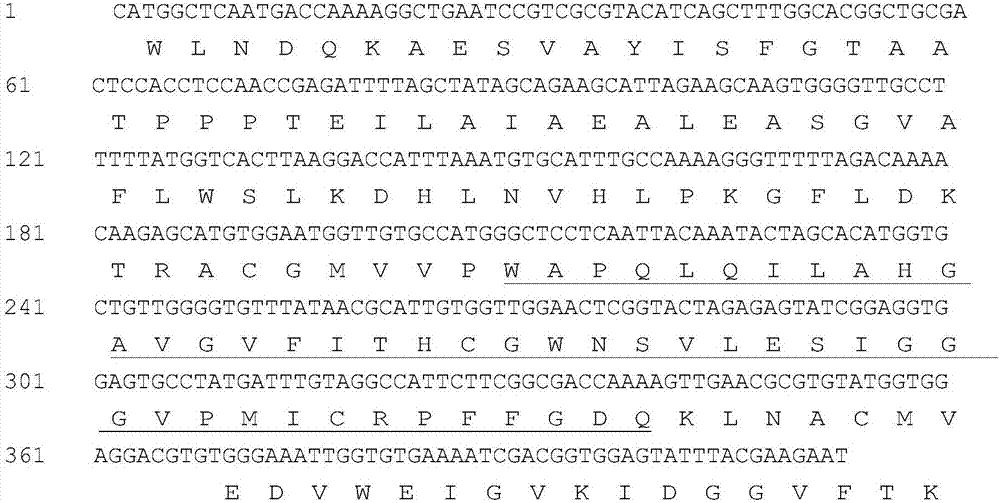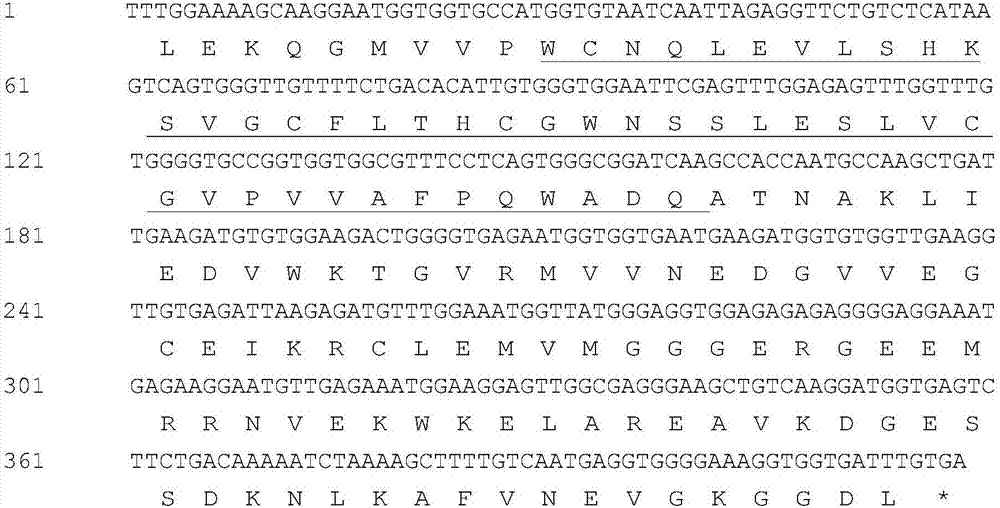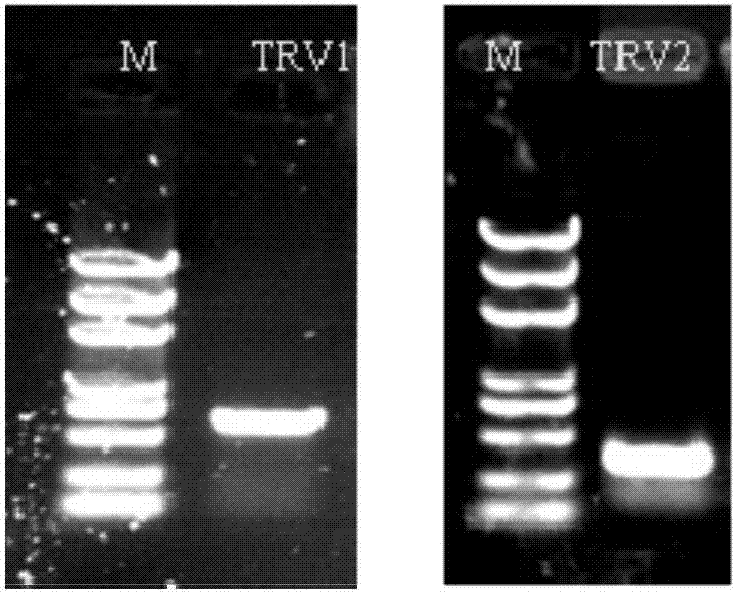VIGS silence system for identifying peony UDPglucose Flavonoid Glucosyl-Transferase gene
A flavonoid glycosyl and transferase technology, which is applied in genetic engineering, plant genetic improvement, and the introduction of foreign genetic material using vectors, etc., can solve the problems of peony regeneration and genetic transformation, and flowering-related gene phenotype identification difficulties, etc.
- Summary
- Abstract
- Description
- Claims
- Application Information
AI Technical Summary
Problems solved by technology
Method used
Image
Examples
Embodiment 1
[0044] The extraction of total RNA from petals was performed according to the kit instructions (RNAprep Pure Plant Kit, FastQuantcDNA Tiangen Biochemical Technology (Beijing) Co., Ltd.). According to the UF3GT and UF5GT sequences in public databases, the upstream and downstream primers are designed to clone the target fragment. Design the upstream and downstream primers for the PsUF3GT and PsUF5GT fragments for VIGS silencing and add BamH I and Xho I restriction sites. Amplification primers are shown in Table 1.
[0045] Table 1 Sequence related information of primers used in the present invention
[0046]
[0047]
[0048] Note: The underline indicates the base restriction site.
[0049] (1) Cloning sequence analysis of PsUF3GT target fragment
[0050] The length of the PsUF3GT target fragment amplified by the upstream and downstream primers is 413 bp, and its nucleotide sequence is shown in sequence 1 in the sequence table. The PCR reaction system and proc...
PUM
 Login to View More
Login to View More Abstract
Description
Claims
Application Information
 Login to View More
Login to View More - R&D
- Intellectual Property
- Life Sciences
- Materials
- Tech Scout
- Unparalleled Data Quality
- Higher Quality Content
- 60% Fewer Hallucinations
Browse by: Latest US Patents, China's latest patents, Technical Efficacy Thesaurus, Application Domain, Technology Topic, Popular Technical Reports.
© 2025 PatSnap. All rights reserved.Legal|Privacy policy|Modern Slavery Act Transparency Statement|Sitemap|About US| Contact US: help@patsnap.com



